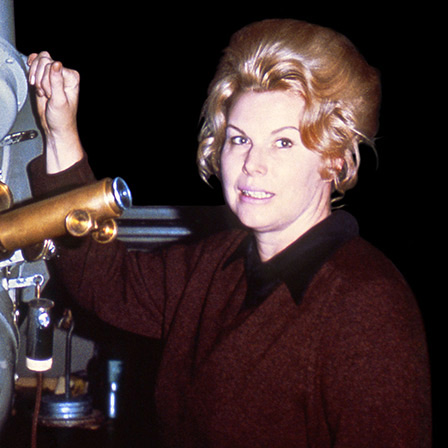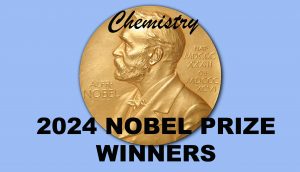This post was originally published on Astrology News Service
Sue Kientz
For years, most of celebrity naming of asteroids was done by a woman in the Near Earth Asteroid Tracking (NEAT) program at the Jet Propulsion Laboratory (a NASA center). This is because many asteroids are discovered by automation. Often there is no one person who finds them; they are found during “earth threat” scans of asteroids that pass close enough to earth that they must be monitored. After Comet Shoemaker-Levy 9 (SL9) hit Jupiter in 1994, it became obvious to many how dangerous these little orbiting things were, so more programs were started to find asteroids close to Earth, but they uncovered celestial bodies all over the solar system, including the many Kuiper Belt objects out there, too.
The late Eleanor Helin at JPL spearheaded the effort to name near-earth and main-belt asteroids NEAT had uncovered, and over time this became known in astronomy circles, so people would email her and suggest candidates for naming.(1) Often those suggested would be people working in space programs like astronauts or people involved in JPL or NASA missions. JPL employee Ron Baalke, my boyfriend of 29 years, had an asteroid named after him when a space enthusiast in Australia nominated him for several accomplishments, including his 1994 website that shared images of Comet SL9 hitting Jupiter in July of that year. Observatories all over the world sent SL9 impact photos to Ron, who only planned to display those from the Galileo spacecraft en route to Jupiter (which had a more direct view of the first impact than Earth did), so he put them all on the website, in what’s been called the first viral Internet event.(2) But Helin also would recognize other people like, right after Ron’s asteroid presentation, she mentioned she was about to honor Walter Cronkite with an asteroid. She may or may not have gotten a recommendation. She just might have seen a story about him and thought it would be a good idea. Helin had wide latitude to do what she wanted. But the point is, astronomers might name their finds, but they don’t need to and often don’t bother. Caltech planetary scientist Mike Brown, discoverer of dwarf planet Eris, also made many other Kuiper Belt discoveries, including rather hefty planetoid 2002 MS4, which he does not plan to ever name, and it’s the largest unnamed body in our solar system!(3) Much smaller bodies than that are named. The fact is, Brown does not have the impetus to name it. But people like Helin felt moved to name hundreds of objects.

And that’s how people do name celestial bodies. They get an idea of what they would like to name the body. It feels right. They think, “Yes, that’s a good name – I like that name. I want to name that asteroid Philadelphia,“ or “…after Taylor Swift.” And that impetus, the power of one’s imagination, comes up with that “perfect” name that, when it’s a person’s name, is synched with that person and, by extension, their chart. It could be as simple as this: someone who has a job like Helin says, “Oh, I know who I’d love to get an asteroid, Robin Williams! I just saw one of his movies last night. I love Robin Williams!” And the intersection of that person with seeing that movie, was timed perfectly with Williams’ birth chart in some way, because we all do things when it feels right, when something feels like the thing to do. To me, that is also a simple enough mechanism to explain how everyone manages to uncannily express the personality configurations of one’s birth chart, and then runs into experiences that mirror the transits to one’s chart.(4) We do what feels right!
Helin image: NASA image (public domain). https://commons.wikimedia.org/wiki/File:Eleanor_F._Helin,_1973.jpg
Notes
1. Other asteroid search initiatives have been moved to pursue other ideas for naming their asteroids. For example, at the Massachusetts Institute of Technology, their asteroid search program LINEAR (Lincoln Near-Earth Asteroid Research) discovered more than 200,000 celestial objects (as of 2009), and those that are numbered are dedicated to being named for middle- and high-school winners of academic competitions, among other student honorees; see https://news.mit.edu/2009/asteroids-honor
2. Ron Baalke’s SL9 website is archived at https://solarsystem.nasa.gov/sl9/
3. Personal conversation between the author and Brown in June 2019, when news leaked that he had named Gonggong, which before that had been the largest unnamed body in our solar system. https://moreplutos.com/news.html#gonggong-official
4. Kientz, Sue. More Plutos. (Indianapolis: Dog Ear Publishing, 2015), p. 273
About the Author
Sue Kientz specializes in astrology’s mid-sized planetary bodies, the largest asteroids and massive trans-Neptunian dwarf planets Eris, Makemake, Haumea, and others discovered this century. Her experience researching the latter led to her book More Plutos, which received a 2016 eLit Award. More Plutos also addresses how resonance, fractals, and intuition can explain how astrology works. Sue argues that the dwarf planets are astrology’s great breakthrough, equivalent to what microorganisms did for medicine. Website: MorePlutos.com; Facebook: www.facebook.com/MorePlutos; E-mail: [email protected]
Share Our Story
- The New Moon’s Energetic News: Sagittarius
https://astronomologer.com/the-new-moons-energetic-news-sagittarius/ - The Mars Retrograde Station: Conflict in Flux
https://astronomologer.com/the-mars-retrograde-station-conflict-in-flux/ - Trump Presidential Cabinet Picks Stir Controversy
https://astronomologer.com/trump-presidential-cabinet-picks-stir-controversy/





